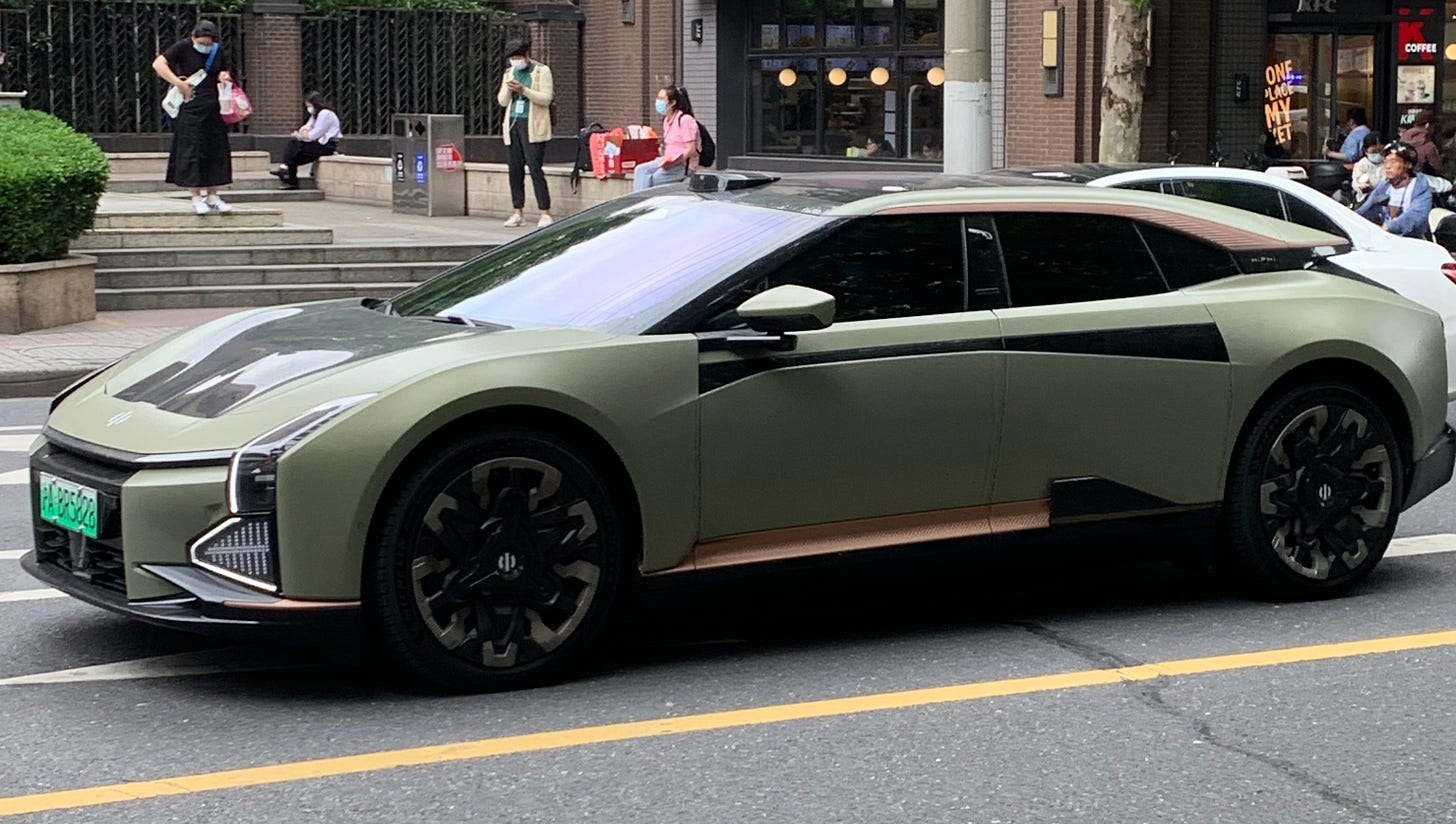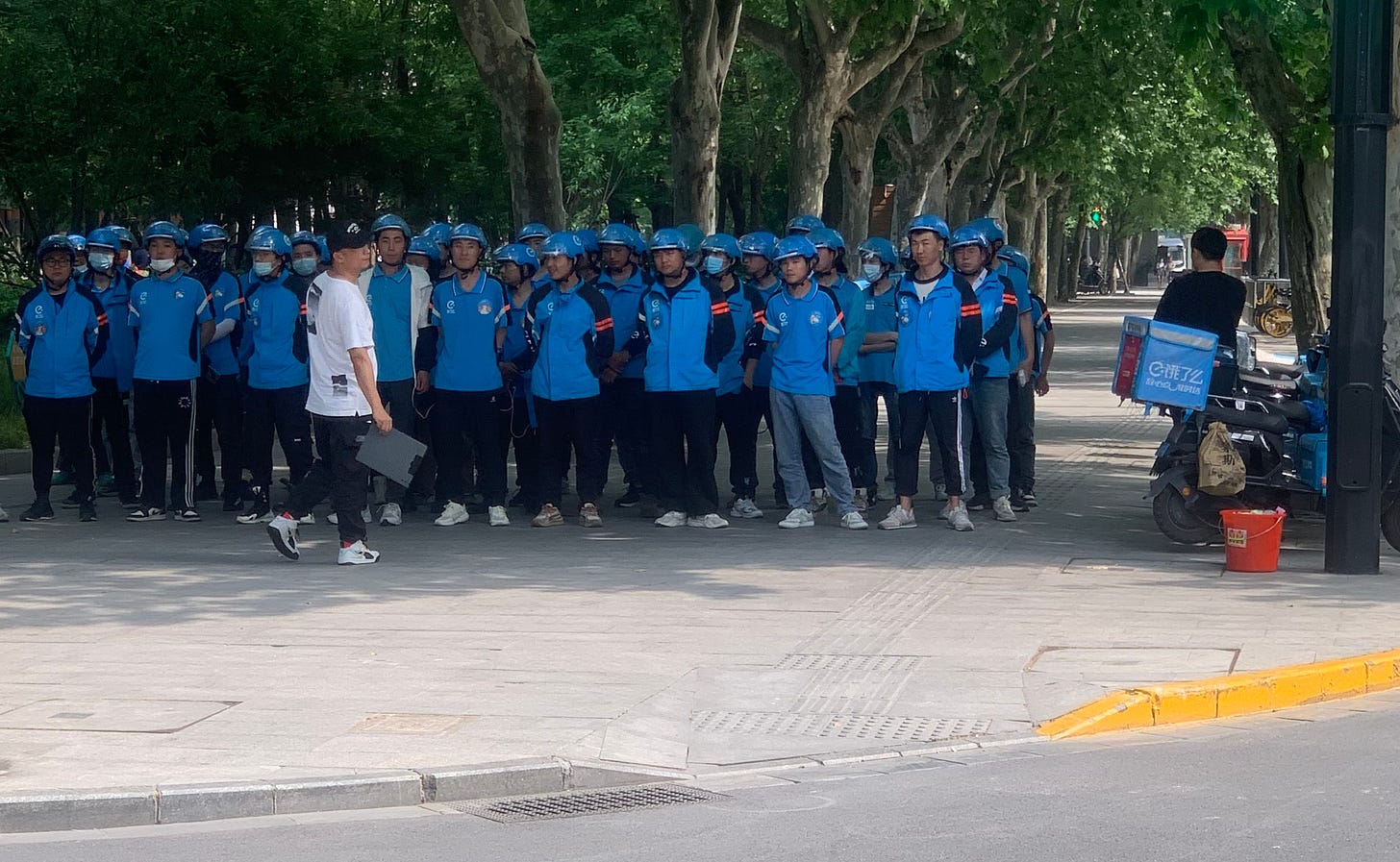I recently returned from a 5 day trip to Shanghai, my first visit to the city and the country since late 2019. It was interesting and instructive being back. While it was a short and incomplete visit, I thought it might be worthwhile sharing some observations, especially given that the vast majority of content on China is being produced at distance and with little direct engagement. One does not have to be an anthropologist to recognise that things look different on the ground. This note is anecdotal, sprinkled with grains of salt, but hopefully of some interest.
It is clear that Shanghai remains a deeply international city, open to the outside world, and yet it is also easy to see that the international presence has diminished. Simply put, the shrinking of the foreign population and the very limited return of foreign tourists is visually obvious, a reflection of the last few years. On entering and exiting, Pudong International Airport remained quiet, a reflection of flights still being limited and expensive. It appears that more routes are coming back online, and presumably prices will moderate somewhat in the coming months. While it is expected outbound tourism will continue to return, the forecast for inbound is less clear. Nonetheless, looking at the makeup of people at the visa office in Tokyo, unsurprisingly it looks like the vast majority of those applying to visit are business-related, a reflection of the close economic linkages that remain.
In terms of emerging from the pandemic, Shanghai felt comparable to other places in Asia I have visited this year. Mask wearing remains higher in this region of the world, although it is slowly declining and more people seem to be using masks in a half-hearted way. Presumably this will continue. I was struck by how quiet and relatively empty all the shopping malls I visited were, it is hard to know how much this is due to oversupply or changes in consumer behaviour, most likely a combination. Nonetheless, it looks like many more similar malls are on the way, with much of the city being in varying stages of destruction and construction. While the wellbeing and future of the country’s property market remains one of the great ‘known unknowns’, it looks difficult to move away from an approach of ‘build, build, build’.
Especially notable is how widespread electric and hybrid vehicles are, compared to what I’ve seen in Japan and Australia. Since 2016, China has been issuing green coloured licence plates to NEVs (new energy vehicles), and for the last few years these were free in Shanghai, although the policy has recently changed. The result has been a remarkable jump in the number of such vehicles on the roads in Shanghai, and elsewhere. According to CnEVPost, ‘NEV penetration has continued to rise in Shanghai over the past few years, with about half of the cars registered in the city now being NEVs.’ This is visually obvious: green plates are everywhere. Shanghai is home to Tesla’s Gigafactory, and while the brand is clearly recognisable, more noteworthy is the prevalence of domestic competitors like BYD (‘Build Your Dreams’) and HiPhi. This is a dynamic and highly competitive sector inside China, and it remains to be seen whether the traditional automotive giants will be able to retain their dominance or lose significant marketshare to new companies. German and Japanese manufacturers are quickly losing their edge, with potential flow on consequences for those economies. As the FT judges, ‘whether the touch screen systems, the connectivity, or the batteries themselves, many of the Chinese-made models are now considered comparable, if not better.’ This reflects more generally the significant advances the country has made in areas of great importance for any kind of green transition. As Noah Smith has recently outlined, China has demonstrated remarkable capacity in regards to high speed rail, electric vehicles and solar power. For wider context, see Adam Tooze’s ‘carbon note’ comparing the current energy transition in the US, Europe and China.
One final observation. Delivery drivers are omnipresent. On entering the hotel lobby, I repeatedly encountered a driver rushing in to drop the delivery as quickly as possible, before rushing out to repeat the same task at another location. This primarily takes the form of the rural poor servicing a wealthy city. It is useful to consider this in reference to the country’s attempts to shift to a consumption based economy. Hui Hang explains: ‘nearly all drivers are middle-aged, ex-factory-workers from rural China, ejected from the shrinking, low-value added and labor-intensive industry they previously worked in and forced into the expanding urban surplus population who depend on hyper-precarious gig work to survive.’ In another article Hang details how delivery platforms use digitalisation and algorithms that treat drivers like robots, quoting one worker’s reflections:
The platform only cares about whether the food is delivered according to their standards. The customer only cares about having their food delivered on time. The traffic police, who are supposed to protect us, only care about whether they can issue us with a fine … Nobody cares about us. They all want to extract some benefit from us … They have nothing to fear because they know we can’t survive without delivering food in the city … To be honest I think the delivery of food is seen as being more valuable than my life.
Where delivery platforms have spread, so have such patterns of exploitation. This is perhaps most brutally seen in South Korea, where more than 20 delivery drivers died from overwork during the pandemic. These dynamics have been powerfully explored by Alec MacGillis in Fulfillment: Winning and Losing in One-Click America, and PC has considered them in an Australian context through the frame of ‘the servile service economy of Deliveroo / Deliveree’. And yet, the lure of convenience seems so hard to resist. Without knowing how distinctive the experiences of these drivers is, I do wonder about the consequences of building such deeply unequal dynamics into the structures of our societies. In this regard, for all the rhetoric emphasising differences, it is worth remembering that the big problems - finding less exploitative, more sustainable and more humane ways to live - are ones that we all are collectively reckoning with.




